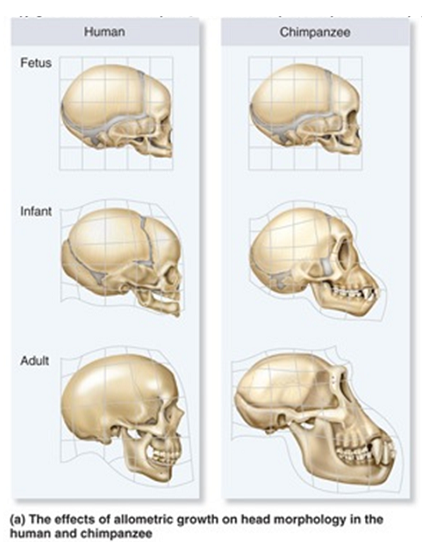You have isolated two novel compounds, Compound X and Compound Y, which you suspect might be carcinogenic in some way. Based on their chemical characteristics, you hypothesize that Compound X is a cancer initiator and Compound Y is a cancer promoter
Design an experiment to test your hypothesis.
What will be an ideal response?
Answer: Treat a laboratory animal with one dose of X followed at a later time by treatment with Y. This protocol should result in cancer if X is an initiator and Y is a promoter. Control experiments should include treating animals with only X and only Y, and treating animals with Y first followed by X. None of these protocols should be very effective at causing cancer.
You might also like to view...
Based on the figure below, what statement could you make about the development of human versus chimpanzee skulls.

A. The human and chimp skulls develop similarly until adulthood, when human jaw development slows down relative to the chimpanzee.
B. The human and chimp skulls develop similarly until the infant stage, when human jaw development slows down relative to the chimpanzee.
C. The human and chimp skulls develop similarly until the infant stage, when human cranium development slows down relative to the chimpanzee.
D. The human and chimp skulls develop similarly during the fetal stage, after which point chimpanzee cranium growth outpaces humans.
Which one of the following has had the greatest evolutionary impact on deep-sea organisms?
1.pressure 2.cold temperatures 3.no light 4.none of these
A bacterial broth culture is diluted by a factor of 100,000, and 0.1 mL of the dilution is spread over the surface of an agar plate. The next day, 123 colonies are observed on the plate. What was the concentration of bacteria in the broth?
What will be an ideal response?
The process of the body using simple substances to build more complex substances is called: